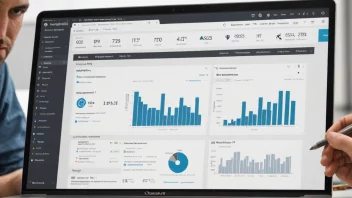Introduction
Software development is a complex process that involves various stages, from planning and design to coding, testing, and deployment. To ensure the success of any software project, it is crucial to measure specific metrics that provide insights into the development process, team performance, and product quality. This article outlines the top 10 software development metrics that every team should consider implementing.
1. Code Quality Metrics
Code quality metrics assess the overall quality of the codebase, including readability, maintainability, and adherence to coding standards. Tools like SonarQube can help automate this assessment.
2. Velocity
Velocity is a measure of how much work a team completes during a sprint in agile methodologies. It helps teams understand their capacity and plan future sprints more effectively.
3. Lead Time
Lead time measures the amount of time taken from the initial idea to its delivery. This metric helps teams identify bottlenecks in the development process and streamline workflows.
4. Cycle Time
Cycle time is the duration from when work begins on a feature until its completion. It helps teams understand how efficiently they are working and can guide improvements in their process.
5. Defect Density
Defect density refers to the number of defects found in a given amount of code (usually per 1,000 lines). It provides insights into the quality of the code and the effectiveness of testing processes.
6. Code Churn
Code churn measures the percentage of code that is rewritten or deleted over a certain period. High levels of code churn may indicate instability in requirements or poor initial implementations.
7. Customer Satisfaction
Gathering feedback from customers through surveys or net promoter scores (NPS) can help teams gauge user satisfaction and identify areas for improvement in both product features and performance.
8. Team Satisfaction
Measuring team satisfaction through regular surveys can provide insights into team morale, collaboration, and productivity. Happy teams are generally more productive and committed to their work.
9. Test Coverage
Test coverage indicates the percentage of code that is tested by automated tests. Higher test coverage usually correlates with lower defect rates and better software quality.
10. Return on Investment (ROI)
Measuring the ROI of software projects helps stakeholders understand the financial impact of their investments. It can guide future project decisions and resource allocations.
Conclusion
Measuring the right software development metrics is essential for continuous improvement and achieving project goals. By focusing on these ten metrics, teams can enhance their productivity, code quality, and overall success. Remember that the key to effective measurement is not just collecting data but also analyzing it for actionable insights.






